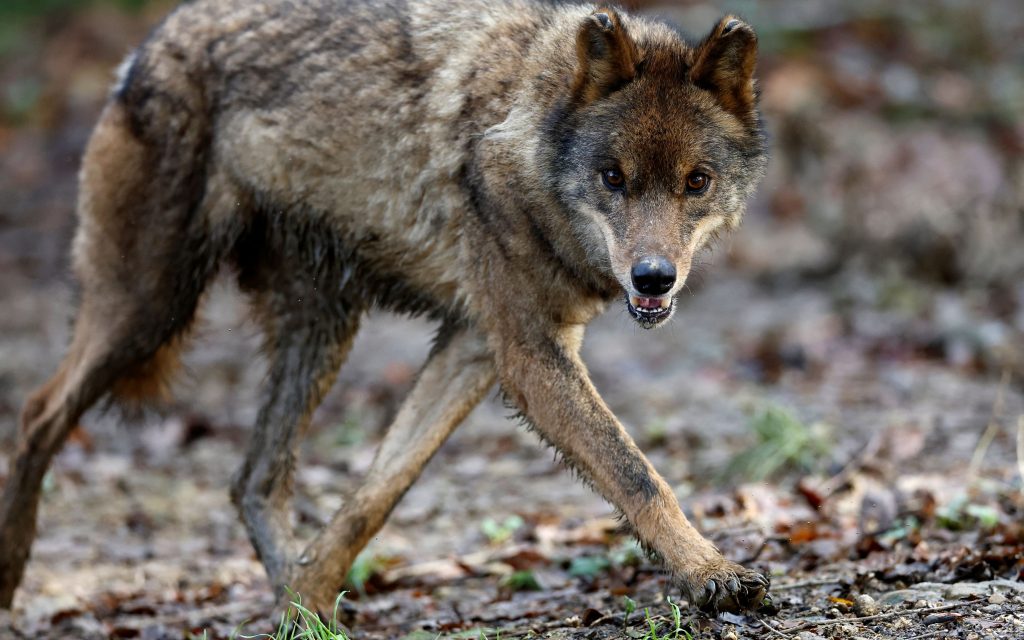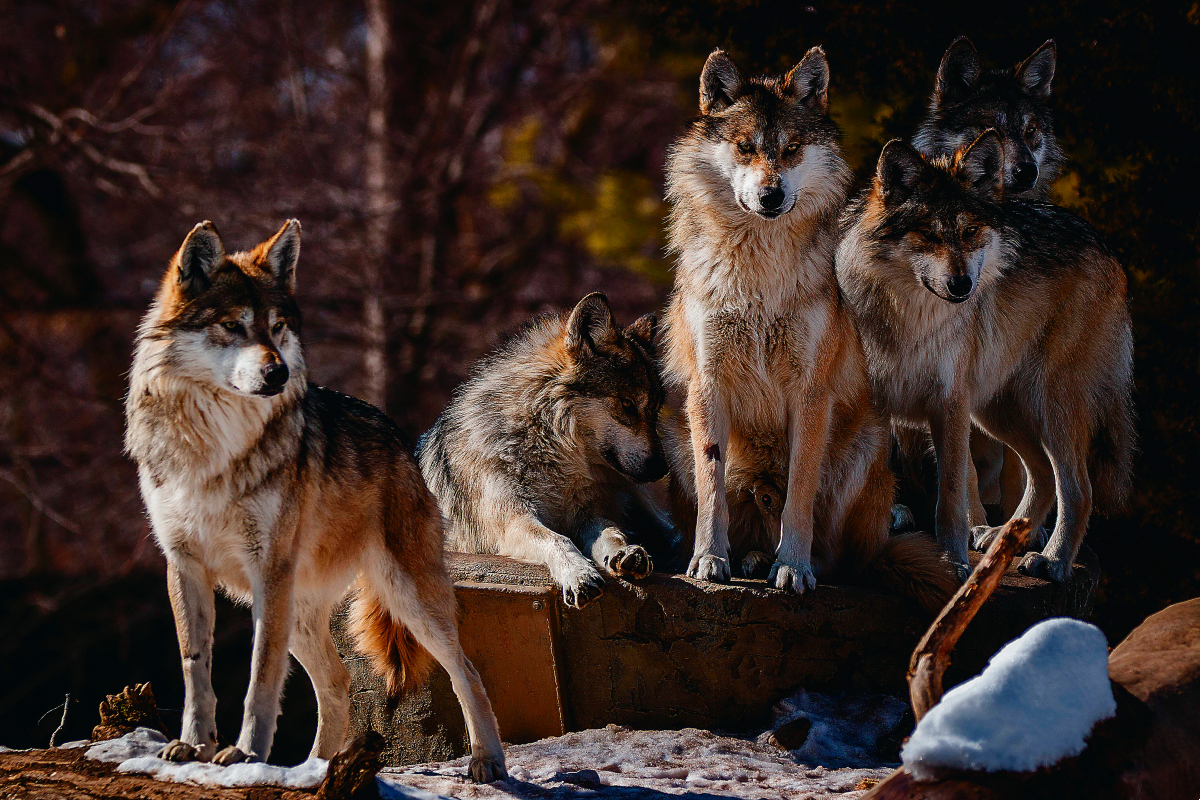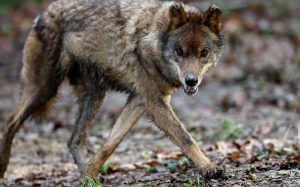The recent order by a public prosecutor to remove wolves (Canis lupus) from Mount Parnitha, the highest mountain in Attica, to protect the mountain’s red deer population has sparked significant debate among environmental organizations and scientists. The decision highlights the complexities of managing ecosystems, particularly in areas where human intervention is heavy and ongoing.
Although there is agreement that the wolf population in Parnitha has grown and red deer numbers are declining, there is sharp disagreement on whether — and how — human intervention should occur. Under natural conditions, such a debate would be unnecessary: predators and prey maintain a balance, and declines in one population naturally limit the other. But Parnitha is far from a pristine ecosystem.
A Vulnerable Environment
The 300-square-kilometer Parnitha National Park, designated a Natura 2000 protected area, is under significant pressure due to its proximity to Athens — home to half of Greece’s population — making it the country’s most-visited national park. Additionally, repeated wildfires in 2007, 2021, and 2024 — largely caused by human negligence — have altered the park’s carrying capacity, i.e., the resources (food, water, shelter) needed to sustain healthy wildlife populations.
Key Players: Red Deer and Wolves
Let’s start with the two species at the center of the issue: red deer (Cervus elaphus) and gray wolves (Canis lupus). Red deer were introduced to Parnitha in the 20th century, likely as a gift to the former royal family, whose estates lie within the park. Over decades, the deer adapted to the area. Their population has fluctuated, with periods of decline due to overhunting and increases following environmental recovery, such as after the 2007 fire. At one point, overgrazing by deer was considered an obstacle to forest regeneration.
Wolves, historically native to Parnitha, disappeared around the 1950s, while jackals survived in the area until the 1980s. Wolves were rediscovered in Parnitha in 2012 by the environmental organization Callisto. Dr. Giorgos Iliopoulos, the group’s lead wolf researcher, told To Vima Science that a lone wolf was spotted initially, followed by an entire pack in 2014 — proof that wolves had reestablished themselves.
This return of a top predator is typically considered a sign of ecological recovery. In fact, Parnitha once hosted lynx and even bears, so the wolf’s return after 60 years was hailed as a success story. But the wolves’ presence has since put pressure on the red deer population, which until then had no major natural predators apart from humans.
Too Many Wolves, Too Few Deer?
Today, wolves are not only present — they’re thriving. Dr. Iliopoulos estimates their numbers at about 50, while other sources suggest even higher figures. However, experts like Professor Athanasios Sfoungaris of the University of Thessaly say Parnitha’s size cannot support such a large number of wolves.
While wolf numbers can be estimated, the deer population is less clear. Estimates suggest that in fall 2014, there were about 850 deer, while by fall 2024, that number had dropped to around 125. Another estimate places today’s number at 300, down from over 1,100 a decade ago. Whatever the case, most agree the deer population is declining.
It’s also important to note that red deer are listed as Critically Endangered in Greece’s Red Book of Threatened Species, despite being common in other parts of Europe. The only native population in Greece is found in the Rhodope Mountains — making the Parnitha deer population ecologically significant.
What Should Be Done?
This brings us to the heart of the debate: what action, if any, should be taken? The prosecutor’s order, directed at the Forest Service and the Natural Environment and Climate Change Organization (OFYPEKA), calls for the immediate removal of wolves to protect the deer.
Scientists, however, disagree — not out of disregard for red deer, but because the data doesn’t clearly show whether wolves alone are driving the decline. Fires in 2021 and 2024, along with habitat degradation, may also be factors. Some experts argue the deer decline could even be a natural correction, leading to a future reduction in wolf numbers as food becomes scarce. “In wolf societies, younger individuals are forced to disperse when resources run low,” Iliopoulos explains. While he understands the prosecutor’s concern, he believes the decision to remove wolves lacks a solid scientific basis.
At present, scientists simply do not know what the carrying capacity of the Parnitha ecosystem is — meaning the order to remove wolves is seen as premature. To better understand the situation, OFYPEKA, in collaboration with Aristotle University of Thessaloniki and Callisto, has launched two research programs to monitor both species and their behaviors.
In the meantime, immediate steps could be taken to support the deer without removing predators. These include habitat improvements and installing water troughs to help the deer survive dry summers, Iliopoulos says.
Is Removing Wolves Even Possible?
Even if the decision stands, removing wolves may not be feasible. Capturing them is extremely difficult and time-consuming. Dr. Iliopoulos shared that he and his team recently fitted a tracking collar on a wolf in Parnitha — and just ten days later, it had reached the city of Lamia, over 160 kilometers away.
Scientists are now hoping their request for further consultation before the prosecutor’s order is implemented will be taken seriously.
Legal Protection Framework
Mount Parnitha lies 20 km (12 miles) north of Athens in a straight line — 36 km (22 miles) by road — and is the highest and largest mountain in Attica. In 1961, much of the area was declared a National Park. It is also a designated Site of Community Importance under EU Directive 92/43/EEC (site code GR3000001, area: 14,902.43 ha) and a Special Protection Area for birdlife under Directive 79/409/EEC.
Large sections of the park are also classified as Wildlife Refuges under Greek law (Law 2637/1998). A 2007 Presidential Decree further established six zones within Parnitha, each with different levels of environmental protection, from absolute conservation to zones designated for education, recreation, tourism, and agriculture.







